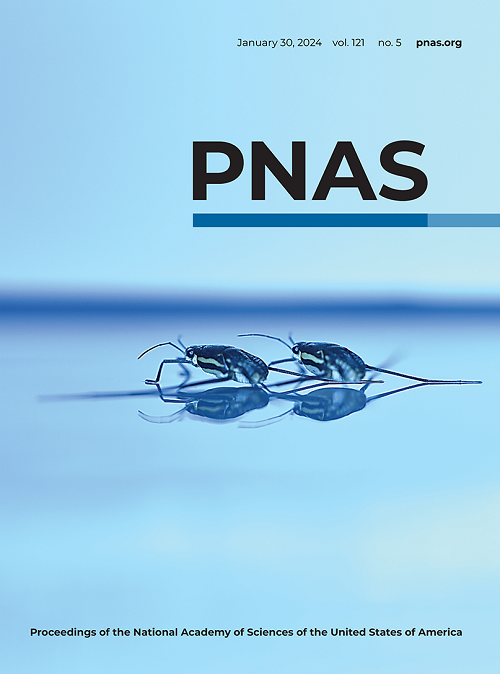格陵兰西北部对重现观测的模式海平面贡献的增加
IF 9.4
1区 综合性期刊
Q1 MULTIDISCIPLINARY SCIENCES
Proceedings of the National Academy of Sciences of the United States of America
Pub Date : 2025-06-16
DOI:10.1073/pnas.2411904122
引用次数: 0
摘要
为政府间气候变化专门委员会提供信息的冰盖模式相互比较项目(ISMIP)中使用的最先进的冰盖模式模拟往往低估了观测到的格陵兰冰盖的质量损失,这导致了未来海平面上升是否可能比预测的要大的问题。我们使用其中一个模式,冰盖和海平面系统模式,来研究瞬态校准如何影响历史和预测模拟。瞬态校准是冰流模型中的一项新兴能力;它使用时间序列的表面观测和时间相关的物理来约束不确定的模型参数——在这种情况下,滑动律中的基本摩擦系数。与普通的快照反演方法相比,瞬态校准具有更多的约束条件,可以更好地捕捉冰动力学的趋势。在这里,我们将这两种方法应用于格陵兰岛西北部,这是一个正在经历快速变化的地区。对于用快照反演初始化的模拟,我们发现随后的建模速度通常太慢,导致对质量损失的低估。然而,通过瞬态校准,我们的模拟更好地匹配观测速度的时间序列,使其在质量损失的观测误差之内;然而,与观测到的地表高程的拟合略有降低。结合ISMIP的结果,我们的模拟表明,再现历史上高质量损失率将导致该地区在未来一个世纪对海平面的贡献更大。最后,我们提出了将瞬态校准扩展到整个格陵兰冰盖的前进道路。本文章由计算机程序翻译,如有差异,请以英文原文为准。
Increased sea-level contribution from northwestern Greenland for models that reproduce observations
State-of-the-art ice sheet model simulations used in the Ice Sheet Model Intercomparison Project (ISMIP) that informs the Intergovernmental Panel on Climate Change tend to underestimate observed mass loss from the Greenland Ice Sheet, leading to the question of whether future sea-level rise may be larger than projected. We use one of these models, the Ice-sheet and Sea-level System Model, to investigate how transient calibration impacts historical and projection simulations. Transient calibration is an emerging capability in ice flow models; it uses time series of surface observations and time-dependent physics to constrain uncertain model parameters—in this case, the basal friction coefficient in the sliding law. With more constraints than the common snapshot inversion method, transient calibration has been shown to better capture trends in ice dynamics. Here, we apply both methods to northwestern Greenland, a region undergoing rapid changes. For simulations initialized with the snapshot inversion, we find that subsequent modeled velocities are generally too slow, leading to an underestimation of the mass loss. With transient calibration, however, our simulation better matches a time series of observed velocities, bringing it within observational error for mass loss; however, the fit to observed surface elevation is slightly reduced. Together with the ISMIP results, our simulations show that reproducing the high rates of historical mass loss leads to greater projected sea-level contribution from this region over the coming century. Finally, we suggest a path forward for making transient calibration scalable to the entire Greenland Ice Sheet.
求助全文
通过发布文献求助,成功后即可免费获取论文全文。
去求助
来源期刊
CiteScore
19.00
自引率
0.90%
发文量
3575
审稿时长
2.5 months
期刊介绍:
The Proceedings of the National Academy of Sciences (PNAS), a peer-reviewed journal of the National Academy of Sciences (NAS), serves as an authoritative source for high-impact, original research across the biological, physical, and social sciences. With a global scope, the journal welcomes submissions from researchers worldwide, making it an inclusive platform for advancing scientific knowledge.

 求助内容:
求助内容: 应助结果提醒方式:
应助结果提醒方式:


